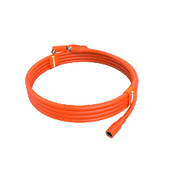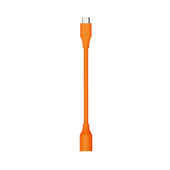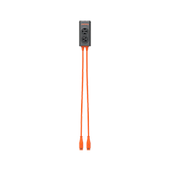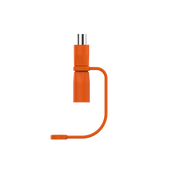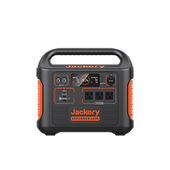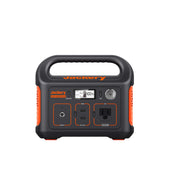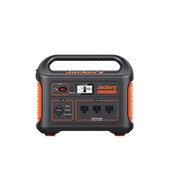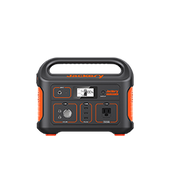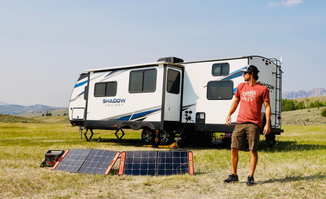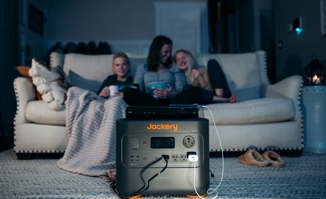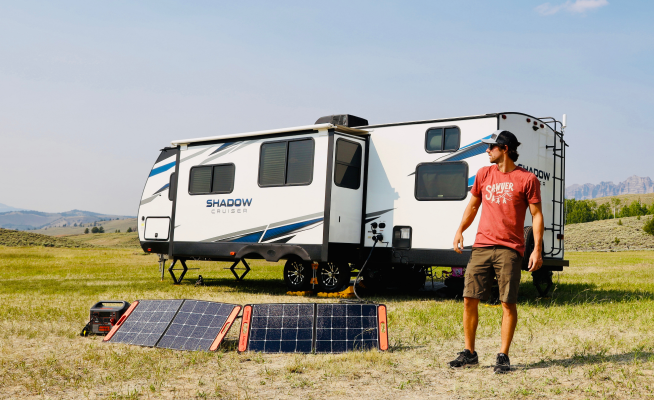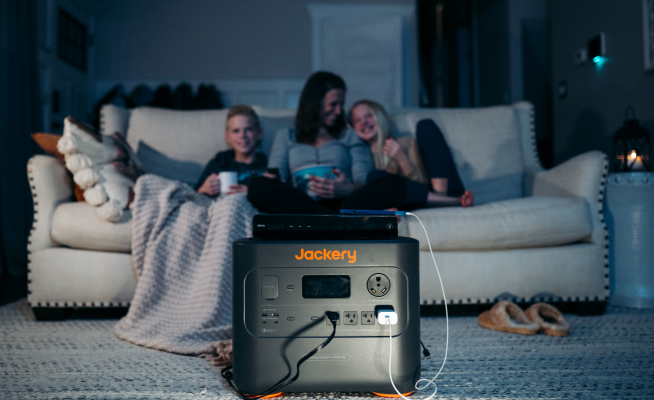The Ultimate Guide to Solar Panel Output
Solar panels have been around for decades, helping people access clean and renewable energy to power their electrical appliances. They are the light-absorbing, energy-producing powerhouses available on the market. The solar panel output varies from model to model and determines how efficiently the solar panels can convert sunlight into electricity.
If you plan to invest in solar panels or a complete solar power generator (i.e., solar power station and solar panels), it's worth noting the energy it can produce. Jackery Portable Solar Panels are lightweight and foldable energy-producing sources that are easy to carry and use.
Teaming them up with Jackery power stations allows you to store the power produced and keep all your gear charged even when the sun's energy is unavailable.

In this article, we'll walk you through the basics of solar panel power output, why it matters while buying solar panels, how to calculate energy production, and the top solar panels in 2023.
What Is The Solar Panel Output
Let's start off with the basics – what is solar panel output?
Solar panel output is expressed in watts (W) and represents the amount of direct current (DC) power production in standard test conditions.
Most residential solar panels today have power output ratings from 250-400 watts per hour, with an efficiency of 15-20%.
However, there are a few other solar panels with an efficiency that exceeds 20%.
The Jackery SolarSaga Solar Panels have 23-25% efficiency, making them the best solar panels available. These easy-to-carry solar panels range from 80-200 watts and can combine with portable power stations to produce more power and charge appliances than their competitors.
The power station and solar panels combination is ideal for helping you charge home appliances and carry clean power sources on the go to enjoy outdoor adventures.
Why Solar Panel Output Matters
When deciding on the right solar panel, the most important metric you'll need to consider is the output of a photovoltaic panel. A solar panel with high output can help you utilize maximum solar energy and save money.
Besides, the price you pay for the solar panel will depend on its output (expressed in watts) and efficiency. For instance, you'll need to pay more for a 200-watt solar panel than a 100-watt panel as the former has higher solar panel output. Hence, choosing wisely can help you save dollars and utilize the sun's energy.
The Key Terms Of Solar Panel Output
Before calculating the solar panel output, it's vital to understand its key terms.
- Kilowatt (kW): The electrical energy produced by solar systems or solar panels is expressed in kilowatts. It is the measurement of electrical power that equals 1000 watts.
- Kilowatt Hour (kWh):It measures the electrical energy equivalent to the power consumption of 1000 watts in 1 hour.
- Direct Current Power (DC): The form of power that the solar panels will initially produce is DC current.
- Alternating Current Power (AC):All the DC power generated by solar power panels is converted into AC to charge the home appliances.
- Efficiency (E):It measures the ability of solar panels to convert sunlight into usable electricity.
- Watts (W):The output of the solar panel is measured in watts.
Understanding the terms associated with the solar panel will help you calculate the output and invest in the right size solar panel.
How To Calculate The Solar Panel Output
Every solar panel model is different, meaning they produce a varied amount of electricity. However, a few simple calculations can help you estimate the system's potential output.
- Solar Panel Output Per Day
Calculate how much electricity (in kilowatt-hours) your solar panel will generate each day using the below-mentioned formula.
Formula
Output = [Solar Panel Size (in square meters) × 1000] × Solar Panel Efficiency (percentage as a decimal) × Number of peak sun hours per day
Example
Suppose the solar panel size is 1.6 square meters.
1.6 × 1000 = 1600
If the panel is 20% efficient, the energy produced will be 1600 × 20% = 320.
Now that you have the power generated, suppose your area gets peak sun rays for 4 hours (in a day).
Output = 320 × 4 = 1280 watt-hour.
Divide it by 1000 to convert watt-hour to kilowatt-hour.
1280 watt-hour / 1000 = 1.28 kWh per day.
Note: The number of peak sun rays in an area will significantly depend on the location, season (winter or summer), etc.
- Solar Panel Output Per Month
Now that you understand how to calculate solar panel output for one day, multiply the figure by 30.
In the above example,
Monthly solar panel output = 1.28 kWh × 30 = 38.4 kWh per month.
- Solar Panel Output Per Square Meter
To calculate the solar panel output per m2, use this formula:
Capacity = Number of solar panels × Solar panel system capacity
Next, Solar panel output = Capacity ÷ Total system size (one-panel size × number of panels)
Example:
Suppose there are 10 panels of 250 W each.
The capacity will be 10 × 250 = 2500 W in this case.
Then, you can calculate the solar panel output will be 2500 ÷ 16 (10 panels of 1.6 m2 each) = 157 W per m2.
How To Test The Solar Panel Output
When testing the solar panel power output, you may need a multimeter to measure open circuit voltage, short circuit current, and operating current. Let's understand the process in detail.
Step 1: Measure Voc (Open Circuit Voltage)
On the back of the solar panel's specs label, you can find open circuit voltage (Voc). Prepare the multimeter to measure the direct current volts by plugging the black probe into the COM terminal.
Next, set your multimeter to the DC voltage setting. You can find the setting next to the letter V on your solar panel. It is indicated by a solid line above the dotted line.
Now place the solar panel in direct sunlight and locate the positive and negative cables. The positive cable is connected with a male MC4 connector.
Touch the multimeter's red probe to the metal pin of the positive MC4 connector and the black probe to the negative MC4 connector. Now, read the voltage and compare it to Voc. They can be the same or close to each other, indicating that the solar panel is highly efficient.
Step 2: Measure Isc (Short Circuit Current)
Similar to Voc, it's time to measure the short circuit current. Prepare your multimeter to measure amps by setting it up to amp settings.
Similarly, make the connections by touching the red probe with a positive MC4 connector. Read the current on the multimeter and compare it with Isc. If it's close, the solar panels are in good condition.
Step 3: Measure PV Current or Operating Current
To measure the PV current, you'll need a charge controller, battery, and a multimeter. You can start the measurement by connecting the solar charge connector to the battery and adapter cables to the charge controller.
In this case, you need to connect the negative solar cable and adapter cable together. However, you don't have to join the positive solar cables. Follow step 2 and prepare the multimeter to measure amps.
Be sure the solar panel is not producing any electricity during the measurement by covering the PV cells with a cloth. Touch the red probe to the male MC4 connector, whereas the black probe should be connected to the female MC4 connector (attached to the charge controller).
Once the connection is complete, remove the cloth and read the amperage on the multimeter. Compare this number to the current at max power (Imp) to see how much output the solar panels can produce.
Note: Solar panels do not produce 100% rated power output. Therefore, if the solar panel power output is 75-85% of their rated power output, consider them highly efficient.
Factors Affect The Solar Panel Output
Now that we've discussed how to test solar panel output, it's time to understand the factors that affect the output.
- Solar Panel Efficiency
The conversion efficiency indicates the percentage of received light it can convert into usable energy. Most residential panels have 15-20% efficiency, though some advanced models like Jackery SolarSaga Solar Panels exceed 23%. The more efficient the solar panel is, the higher the solar panel output.
- Panel Size & Solar Cell Number
Solar panels consist of photovoltaic (PV) cells that convert solar energy. The larger the panel size, the more solar energy it can absorb. However, efficiency is still the primary player, as a highly efficient 100-cell panel is a better choice than a 200-cell panel with low efficiency.
- Environmental Factors
The number of sunlight hours and the location will directly impact the solar panel's output. Homeowners living in areas that receive longer, brighter periods of sunlight can produce maximum solar power with the help of solar panels. Additionally, the orientation and tilt of the solar panel define how much energy will be absorbed and converted.
- Dirt
Excessive dust and debris collected on the solar panel can reduce its efficiency and output. That's why it's essential to wipe the dust off the solar panels with a clean cloth regularly.
How Much Energy Does A Solar Panel Produce

Solar panels contain photovoltaic or solar cells that capture the sun's power and transform it into DC (or direct current) electricity. The energy produced is measured in watts.
Most common solar panels typically produce a few hundred watts per hour to 400 watts per hour, depending on the location, panel size, and the sunlight condition.
You can determine the approximate solar panel output by multiplying the panel's wattage with the average number of direct sunlight hours.
How Does A Solar Panel Generator Work

Solar panels and a power station work to capture solar energy, convert it into electricity, and store it to charge the electronics.
The photovoltaic or silicon cells in the solar panels establish an electric field by separating opposite charges. The silicon is doped with other materials to facilitate the flow of current. With the help of a conductive wire, the generated electricity is transmitted to the inverter.
The inverter's role is to convert DC into AC, which is then moved to the electric panel. Once the power station is charged, you can easily plug your appliances in and power them.
How Much Energy Does A Solar Panel Produce
Let's understand how much energy will the solar panel produce so you can buy the right power system for your needs:
The first step is determining how much solar output you need to power appliances. To make your home solar, check the monthly electric bill and note the kWh usage.
Next, you'll need to determine how many hours of direct sunlight your home receives. You can purchase a solar power system based on your electricity usage and the number of direct sunlight hours.
How To Maximize Solar Panel Output
Investing in best-in-class solar panels is not enough; you'll need to focus on maximizing its output. Here are the best tips to help you get the maximum benefit from your solar investment.
- Panel Orientation:Your solar panels should directly face the sun to generate maximum energy. The upper surface of the panel with photovoltaic cells should get direct rays of sunlight during the peak hours.
- Eliminate Shading:Shades of trees or other objects can block direct sunlight. With that in mind, placing the panels in an area with direct sun rays is best.
- Keep It Clean: Accumulation of snow, debris, dust, and other particles on the panels can reduce their output. Therefore, wipe them once a month using a cloth or soft brush to boost efficiency.
The Best Portable Solar Panel With Jackery
Jackery is the top-selling global solar generator brand helping homeowners with portable, safe, and versatile solar power systems.

Jackery SolarSaga Solar Panels with varied capacities of 80W, 100W, and 200W work perfectly when combined with the Jackery Explorer Portable Power Station.
Below we've illustrated the three top Jackery SolarSaga Solar Panels available on the market.
Jackery SolarSaga 100W Solar Panels

Jackery SolarSaga 100W Solar Panels are foldable and lightweight monocrystalline solar panels that can be charged with the sun's power. With a high conversion efficiency of 24.3%, solar panels convert solar energy into usable electricity faster.
The solar panel is compatible with Jackery Explorer 240/500/1000 Portable Power Stations. The Jackery SolarSaga 100W Solar Panel features two output ports – 1*USB-C (5V,3A) and 1*USB-A (5V,2.4A) – to charge two small devices directly.
|
Product |
Peak Power |
Dimensions |
Conversion Efficiency |
Compatible with Explorer |
Weight |
|
Jackery SolarSaga 100W Solar Panels |
100W |
Folded: 24 x 21 x 1.4 in (610 x 535 x 35 mm) Unfolded: 48 x 21 x 0.2 in (1220 x 535 x 5 mm) |
24.3% |
Jackery Explorer 240/500/1000 |
10.33 lbs |
Jackery SolarSaga 80W Solar Panels
The dual-sided Jackery SolarSaga 80W Solar Panel generates electricity from both sides and is relatively easy to assemble. In addition, the extra-white glass on the back panel boosts the overall conversion rate of the solar panel.
Jackery SolarSaga 80W Solar Panels are made of 2.8mm low iron full toughened glass, making them highly durable. Additionally, the solar panels are compatible with all the Jackery Explorer power stations and can charge multiple devices simultaneously.

|
Product |
Peak Power |
Dimensions |
Conversion Efficiency |
Compatible with Explorer |
Weight |
|
Jackery SolarSaga 80W Solar Panels |
80W |
906 × 528 × 27 mm |
25% |
All the Jackery Portable Power Stations |
11.2 lbs |
Solar Panel FAQs
Every homeowner, hiker, camper, or outdoor enthusiast requires solar-powered systems to leverage the power of solar energy. However, each individual has different needs and requires different solar panel output. Here are some frequently asked questions buyers ask before investing in a solar power system.
- How to check if my solar panel is working efficiently?
Using a multimeter, you can quickly check if your solar panel is efficiently working and generating as much power as it should be.
- Can I store the power that my solar panel generates?
Yes. You can store the power generated by solar panels in solar power stations. Jackery Explorer Portable Power Stations are compatible with Jackery SolarSaga Solar Panels. Connecting the portable power station with the solar panels helps you to store the energy for later use.
- How to calculate the solar panels needed for camping?
The number of solar panels for camping will depend on how many electronic devices you'll use and the energy required to power them. If you want to charge all your small and large appliances during camping, consider investing in Jackery SolarSaga panels and Explorer power station combination.

- How to take advantage of your solar panel output?
With a power station, you can take full advantage of your solar panel output. The portable, battery-powered power station from Jackery is a rechargeable, safe, and easy-to-use power backup source.
The combination of Jackery Explorer power stations and solar panels can charge all your devices, including a mini cooler, refrigerator, heater, etc. Some benefits of Jackery Solar Generator include:
- Safe to use and emit no fumes
- Portable power source, making it suitable for camping or hiking
- Requires no extra maintenance
Final Thoughts
Homeowners are investing in solar-powered devices to go off-grid and minimize their reliance on the electricity grid. Determining the solar panel output and choosing the best solar system is a great way to harness the power of the sun's energy and charge your electric appliances.
Jackery SolarSaga Solar Panels combined with Jackery Explorer Portable Power Station can help you utilize sustainable power. You can combine Jackery Solar Generator 2000 Pro for fast charging and powering most home appliances during off-grid living, camping, or hiking.
For more information, sign up with the Jackery newsletter and get exclusive deals, promotional offers, and discounts on all Jackery products.
Disclaimer:
The runtime mentioned for appliances powered by Jackery is for reference only. Actual runtime may vary under different conditions. Please refer to real-world performance for accurate results.






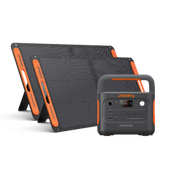


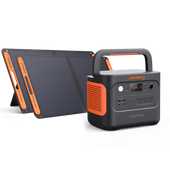

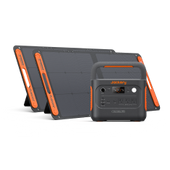
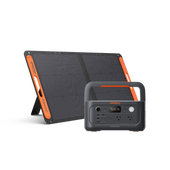
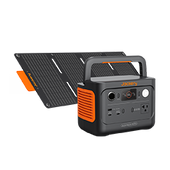
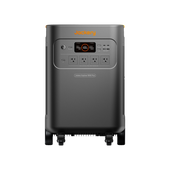
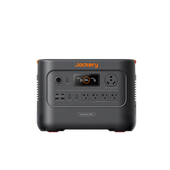
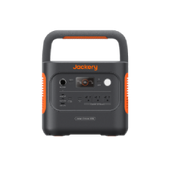
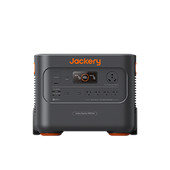
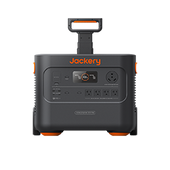

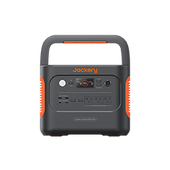
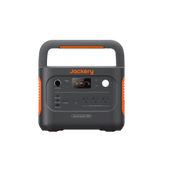
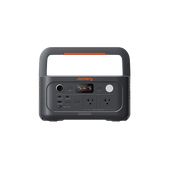

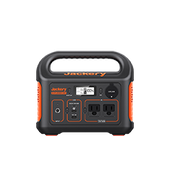
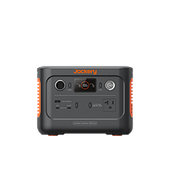
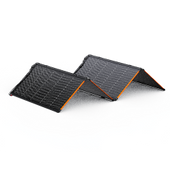
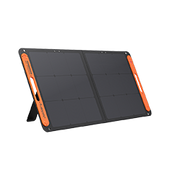


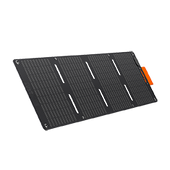
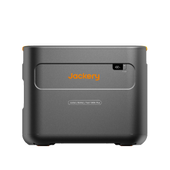
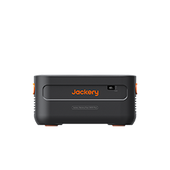
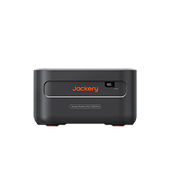
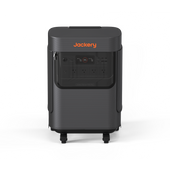
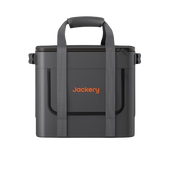
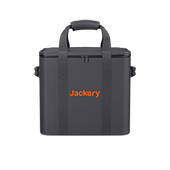
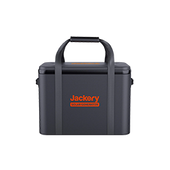
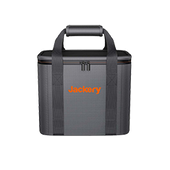
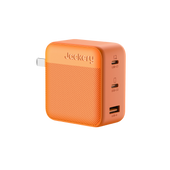
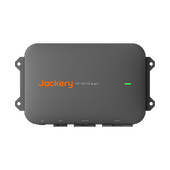
![[Add-on] Jackery Manual Transfer Switch for Explorer 5000 Plus](http://ca.jackery.com/cdn/shop/files/add-on-jackery-manual-transfer-switch-for-5000-plus-240V.webp?v=1757043692&width=170)
